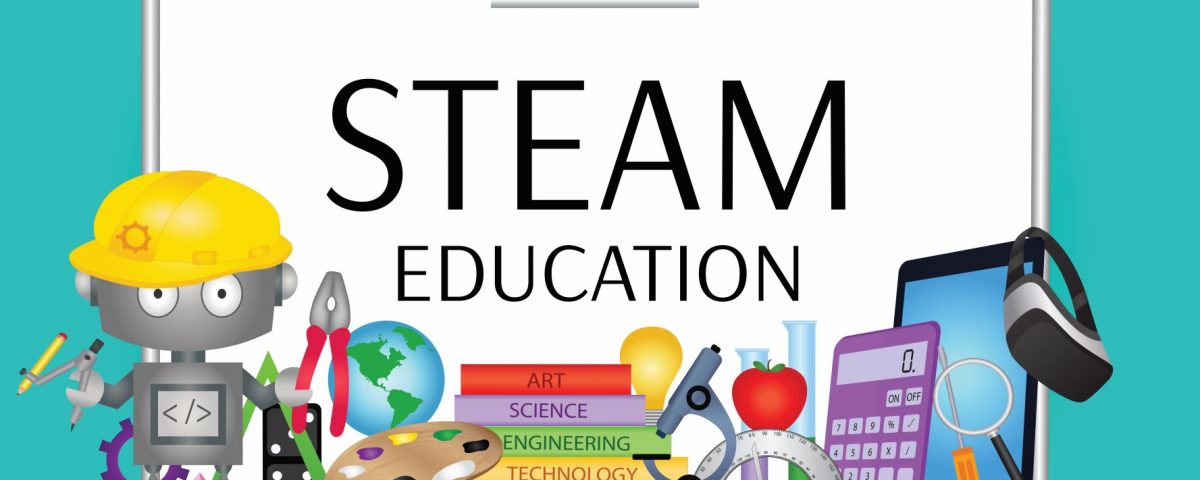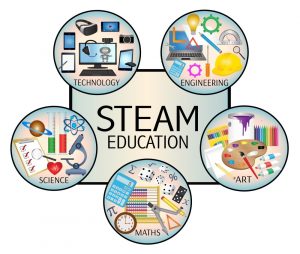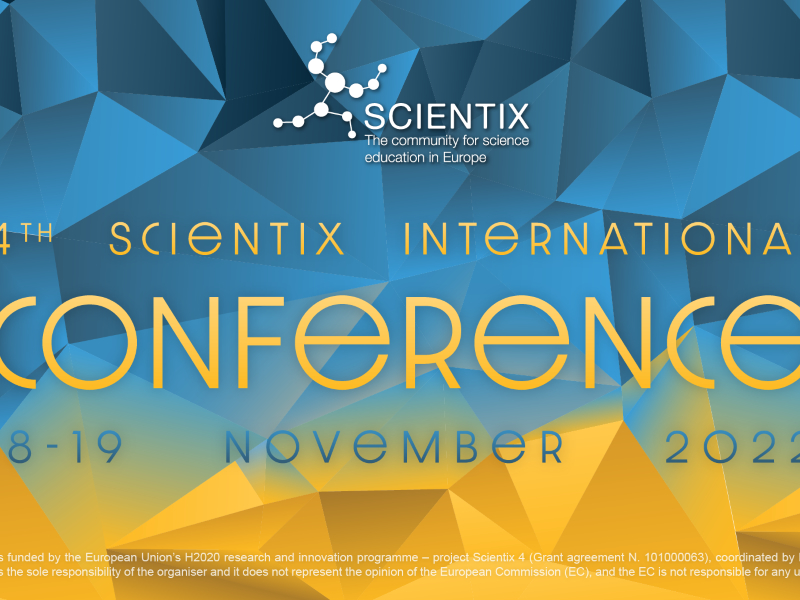STE(A)M educational practices in Romania


The actual Romanian education system needs new STE(A)M challenges and approaches that could revive interest in studying disciplines such as science, technology, engineering and mathematics. It is necessary for these disciplines to become more challenging, to arouse the imagination and inspiration of today’s students, the citizens of tomorrow’s world. In Romania, STE(A)M education is at very beginning, and a lot of efforts should be done in order to develop these educational practices at national level.
STE(A)M approach is based on the idea of educating students with the help of five different disciplines: science, technology, arts, engineering and mathematics – in an interdisciplinary and applied approach. The five disciplines are not studied differently and separately, STE(A)M model integrates them in a cohesive learning paradigm, based on real world demands. What differentiates the STE(A)M model from traditional education is cohesive learning, which shows students how the scientific method can be applied in everyday life, by developing the type of thinking based on problem solving by applying real life solutions.
STE(A)M education is a concept that has started to be talked about in Romania quite recently, but which is believed to become a key point in preparing the young generations for the future. To achieve the integration of STE(A)M approach in the Romanian educational system, Ministry of Education developed in 2019 an “Action plan for education in Romania 2019 – 2030” aiming at increasing the quality of public education by improving the well-being of school communities.
Among the various objectives and actions included in this plan, there is a group referring to the implementation of a new STEM/STE(A)M curriculum. This will bring a new approach to mathematical skills, creative thinking skills, computational thinking and coding, engineering and technological innovation modernization of the student assessment system, as well as a calibration of the assessment of learning outcomes according to individual pathways and clearly defined standards.
The results of implementing the “Action plan for education in Romania 2019 – 2030” will be:
- Elaboration of a new STE(A)M curriculum, based on a trans-disciplinary approach
- Creation of OERs (Open Educational Resources) to support the implementation of the STE(A)M curriculum
- Implementation of an updated competences framework for educators from the STE(A)M field
- Phasing the implementation of the new curriculum at all school levels
- Ongoing monitoring, impact evaluation, and adjustment of resources and indicators for reaching maximum impact.

Although STE(A)M practices are not yet very widely spread in Romania at the moment, there are a few organizations and initiatives which promote and implement STE(A)M education practices and programmes.
This include Asociatia CRESTEM, an innovative non-profit organization whose purpose is creating, developing and promoting an educational ecosystem capable of providing children and students with a complete, balanced and quality education, which will allow them to make informed decisions that will have an impact on the world and how they will live. Main objectives of CRESTEM association are:
- Creating an educational framework, STE(A)M type, adapted to the Romanian educational system;
- Creating, adapting and promoting STE(A)M educational programs (Science, Technology, Engineering, Arts and Mathematics) adapted to the context and specifics of the Romanian education system;
- Supporting the adoption of STE(A)M programs by public and private educational institutions;
- Supporting the creation of extracurricular activities such as robotics clubs, computer circles, etc., which use the STE(A)M approach; Organizing high quality contests and competitions that promote the STE(A)M approach. Their programmes are very well received by kids, youngsters, and students.
Besides the organizations and initiatives implementing STE(A)M education and practices in Romania, there are also a significant number of teachers who attended STEM/STE(A)M training programmes and now are using STE(A)M practices with their students in the classroom as part of their teaching process. Most of these teachers are also members of the SCIENTIX community and eTwinning community and platforms. This two communities help them in developing their skill to use STE(A) approach within the teaching system.
Another great resource for STE(A)M approach in Romania, that many teachers are using is School Education Gateway platform – European online platform dedicated to pre-university education is a great resource. Available in 23 European languages, the School Education Gateway portal is an online platform for teachers, school principals, researchers, trainers, decision makers and other specialists in pre-university education. On this portal one can find a lot of resources, materials and opportunities related to development of STE(A)M practices and programmes.
STEAMonEdu and Fundatia EOS – Educating for an Open Society
STEAMonEdu project partner – Fundatia EOS – Educating for an Open Society, has collected recently various best practices implemented by Romanian schools, of which we mention the following: “RoboCodeTech and Coding in Scrath from Matei Basarab High School Craiova”, “Let’s code the Micro:bit and Minecraft voyage from Nicolae Titulescu Theoretical High School Slatina”, “Scratch și…… Gool! from Association Pro Teodor Murăşanu Turda”. Content of this practices and all Romanian practices that were collected can be found on our STEAMonEdu platform.
We are confident that our participation in the STEAMonEdu project will contribute to the development of STE(A)M practices in Romania and will bring more experiences in this field at national level.
By EOS Romania


